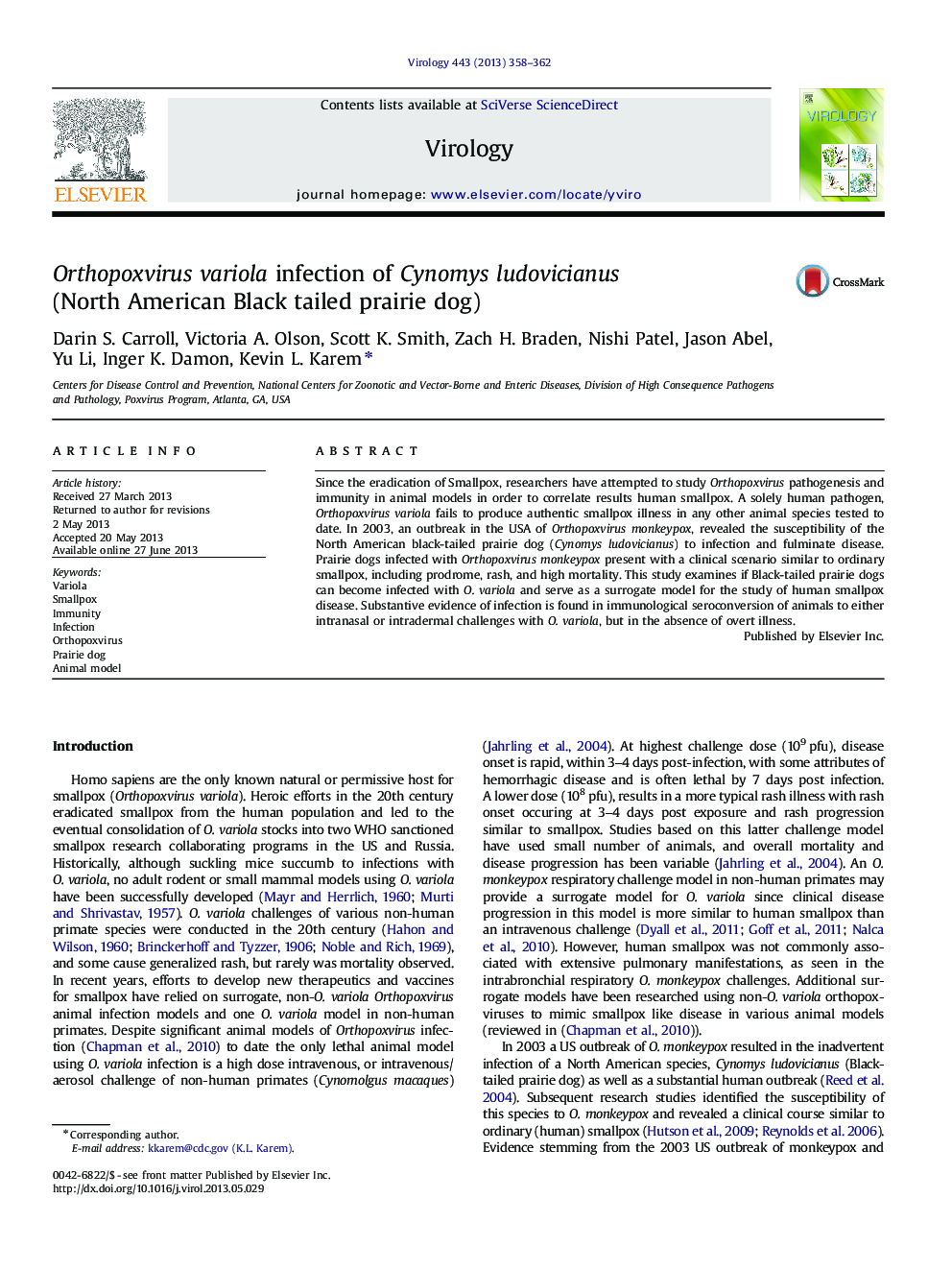| Article ID | Journal | Published Year | Pages | File Type |
|---|---|---|---|---|
| 6140965 | Virology | 2013 | 5 Pages |
â¢We tested the susceptibility of Cynomys ludovicianus (Prairie Dog) to O. variola.â¢Cynomys develop significant immunity following nasal or intradermal infection with O. variola.â¢Molecular testing reveal no detectable viral DNA after infection in this host species.â¢Overt illness was absent in this host species following O. variola challenge at the dose and route described.
Since the eradication of Smallpox, researchers have attempted to study Orthopoxvirus pathogenesis and immunity in animal models in order to correlate results human smallpox. A solely human pathogen, Orthopoxvirus variola fails to produce authentic smallpox illness in any other animal species tested to date. In 2003, an outbreak in the USA of Orthopoxvirus monkeypox, revealed the susceptibility of the North American black-tailed prairie dog (Cynomys ludovicianus) to infection and fulminate disease. Prairie dogs infected with Orthopoxvirus monkeypox present with a clinical scenario similar to ordinary smallpox, including prodrome, rash, and high mortality. This study examines if Black-tailed prairie dogs can become infected with O. variola and serve as a surrogate model for the study of human smallpox disease. Substantive evidence of infection is found in immunological seroconversion of animals to either intranasal or intradermal challenges with O. variola, but in the absence of overt illness.
